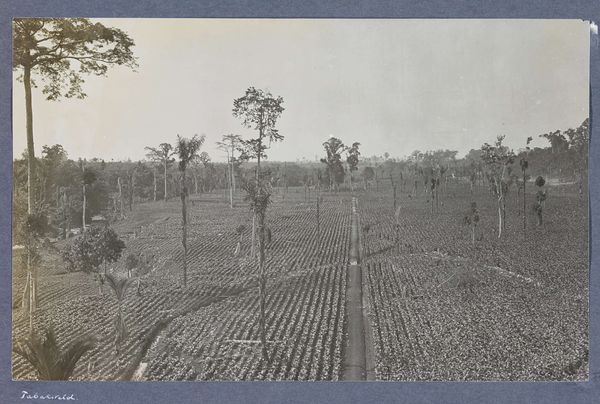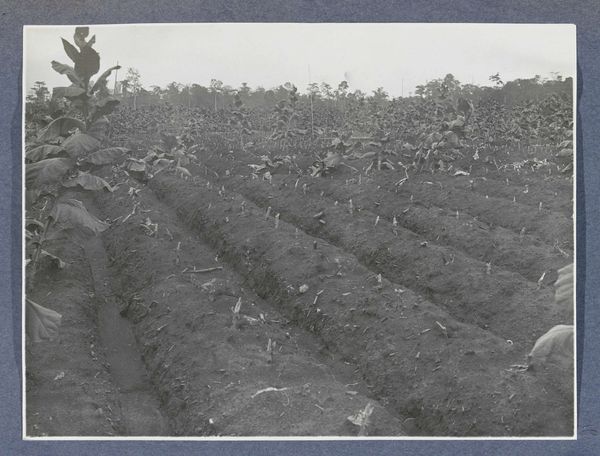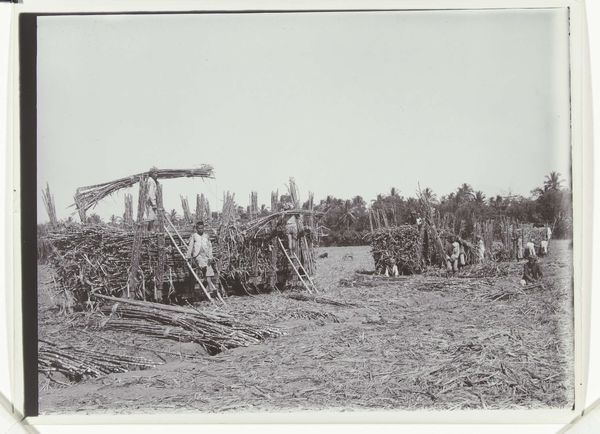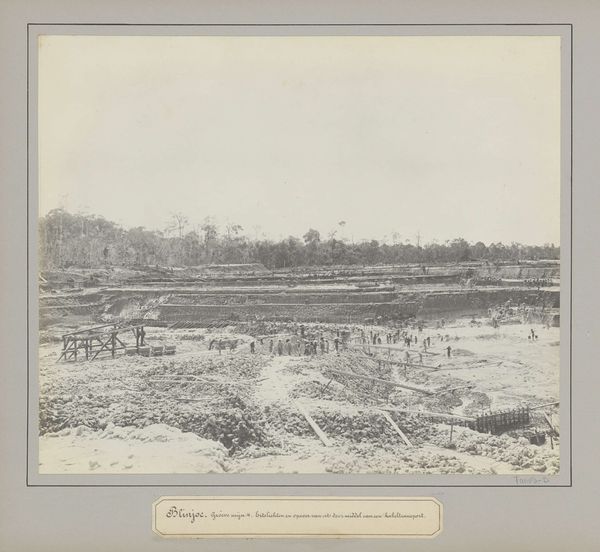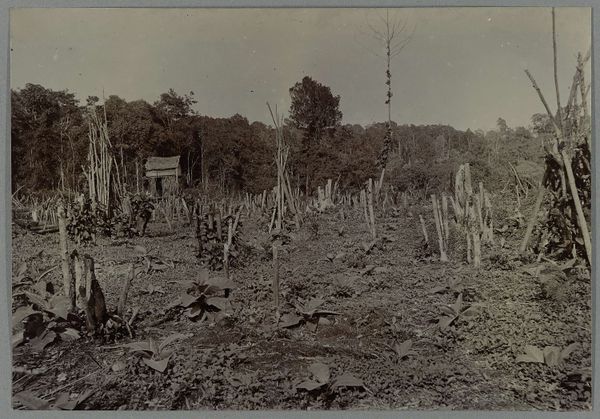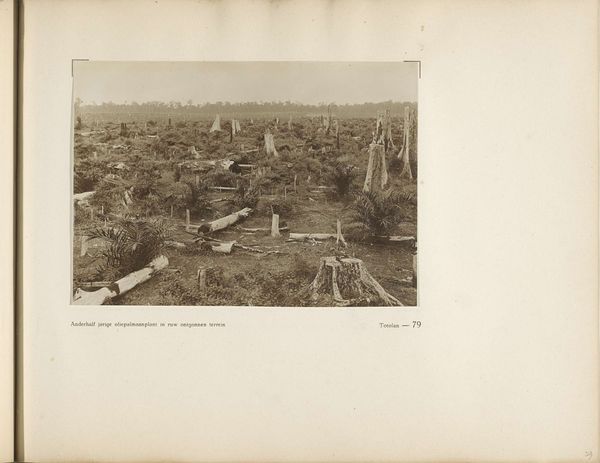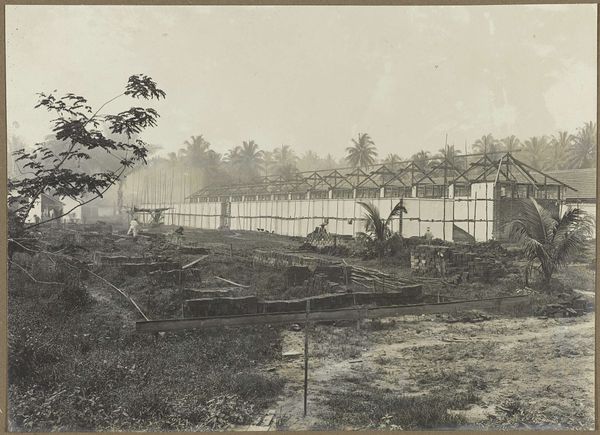
Dimensions: height 178 mm, width 285 mm
Copyright: Rijks Museum: Open Domain
Curator: Carl J. Kleingrothe’s gelatin-silver print, titled "Aanleg van een tabaksveld op Sumatra" transports us to a Sumatran tobacco field sometime between 1900 and 1915. What’s your first impression of it? Editor: An expansive yet stark scene unfolds, dominated by what appears to be meticulous organization overlaid onto what might have originally been wilderness. The sheer scale hints at something much larger than agriculture at play, a sort of landscape transformation perhaps? Curator: Transformation is the key here. You notice those parallel rows? It's a testament to the planned, often ruthless, reshaping of the landscape for tobacco cultivation, which reveals much about colonial economies. This area supplied the factories for some of the best cigars worldwide. It highlights the raw material conditions that fed industrial appetites. Editor: Absolutely. And that production doesn't come cheap. I'm looking at the material presence—the felled trees, the ordered planting rows, what looks like transportation via oxcart. You can almost smell the drying leaves and feel the intense labour that went into constructing this very photograph. These weren’t pristine environments; they were zones of intense resource extraction and toil. Curator: Yes, and the photograph being gelatin-silver offers something too—that sharp contrast between the dense tropical foliage and the almost sterile orderliness imposed upon the field speaks volumes. Kleingrothe captured that tension so elegantly. It invites a feeling of somber reflection to me. Editor: The medium itself contributes: the ease of photographic reproduction mirrors and maybe even fuelled colonial expansion's relentless march! Silver gelatin prints facilitated wide circulation, further legitimizing colonial narratives—they served as both record and propaganda. Curator: Precisely. Though appearing distant, even somewhat serene, there's an undeniable undercurrent. It's in the light, the contrast, and the relentless geometry—an industrial echo in a natural setting that I find very potent. Editor: Seeing the tobacco field dissected like this really emphasizes the cost—both ecological and human—buried beneath each smoke ring. Now that I consider how labor was compensated in those years, this beautiful landscape becomes truly terrifying! Curator: That's wonderfully put. This piece holds a sobering mirror to our past, revealing how interwoven our present comforts are with histories often out of frame, like ghosts.
Comments
No comments
Be the first to comment and join the conversation on the ultimate creative platform.
